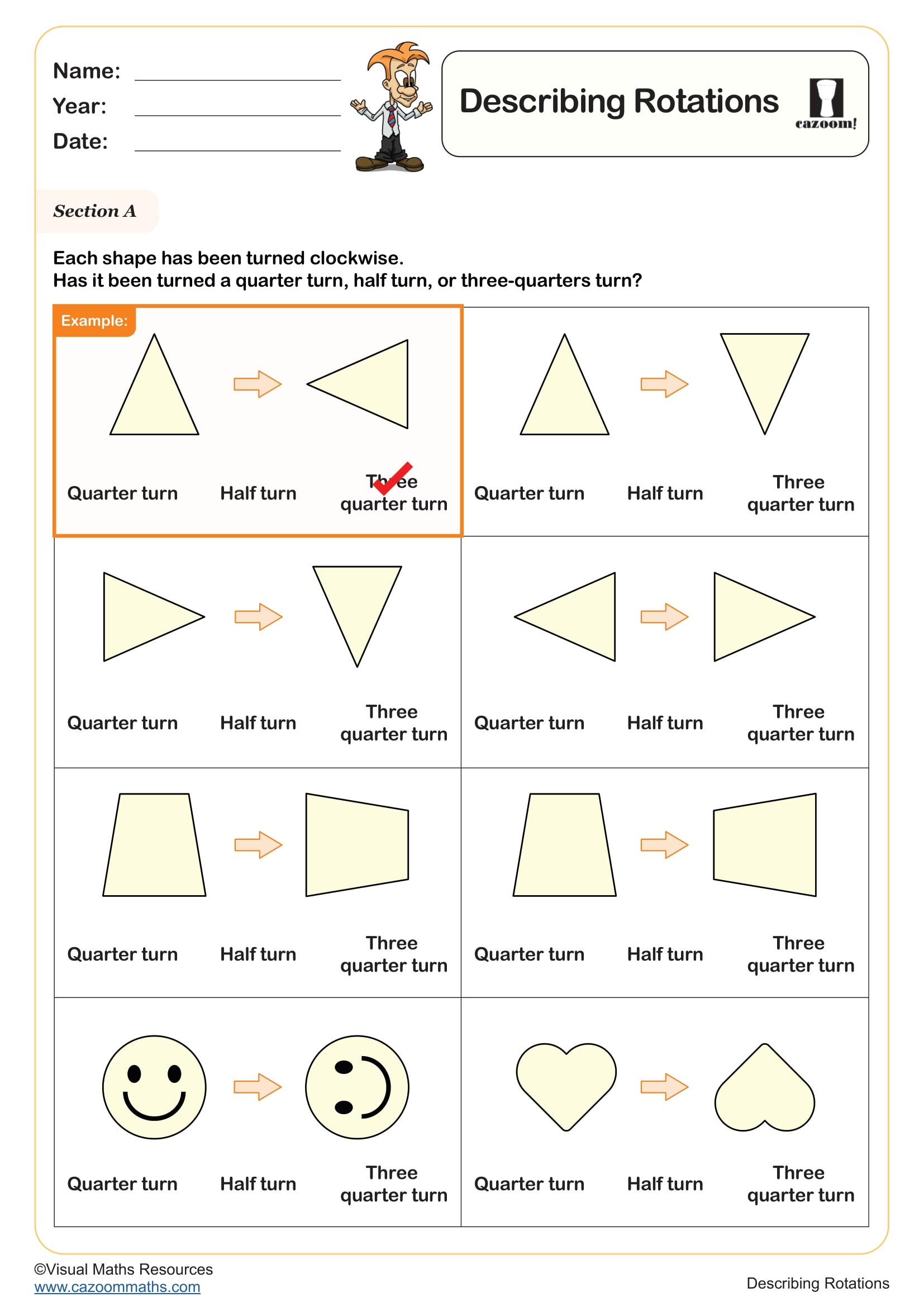Year 1 Position and Direction Worksheets
Position and Direction Printable PDF Worksheets with Answers
Download our comprehensive KS1 position and direction worksheets in printable PDF format to boost your students' spatial understanding. These ready-to-print Year 1 maths worksheets cover essential topics including left and right, top and bottom, above and below, inside and outside. Our collection features positional language activities, direction following exercises, movement descriptions, and spatial reasoning tasks. All position and direction resources come with separate answer sheets for quick marking and easy assessment of pupil progress.
What is Included in These Position and Direction Worksheets?
These Year 1 position and direction worksheets contain diverse activities that cover all fundamental spatial skills for KS1 learners. Students practice using positional vocabulary correctly, following directional instructions, and understanding spatial relationships through varied exercises. The worksheets include position recognition games, direction following activities, and simple problem-solving tasks using maps and grids. Each resource targets specific learning objectives while maintaining engagement through colourful designs and age-appropriate content for young mathematicians.
Why Are These Position and Direction Activities Important?
Our printable PDF position and direction worksheets provide structured practice that reinforces classroom learning and builds spatial confidence in ages 5-6. These resources support different learning paces and help teachers identify areas where students need additional support with positional language. Regular practice with position and direction worksheets develops essential skills that form the foundation for future geometry learning. Visual activities make abstract spatial concepts more concrete and understandable for Year 1 pupils.
• Build strong spatial awareness foundations
• Support different learning speeds
• dentify learning gaps in positional understanding
• Make abstract spatial concepts concrete
• Boost mathematical confidence in geometry
Real Life Use of Position and Direction Skills
Children use position and direction skills daily when navigating their home, school, and playground spaces. Following instructions to find toys, books, or classroom materials requires understanding of positional language like "above," "below," "next to," and "behind." Playing games involves spatial skills through treasure hunts, hide and seek, and following directional clues. These everyday experiences reinforce the position and direction concepts learned through worksheet practice and classroom activities.
• Finding personal belongings at home and school
• Following directions and maps
• Playing games requiring spatial awareness
• Understanding safety instructions and locations
• Describing where objects are positioned.



